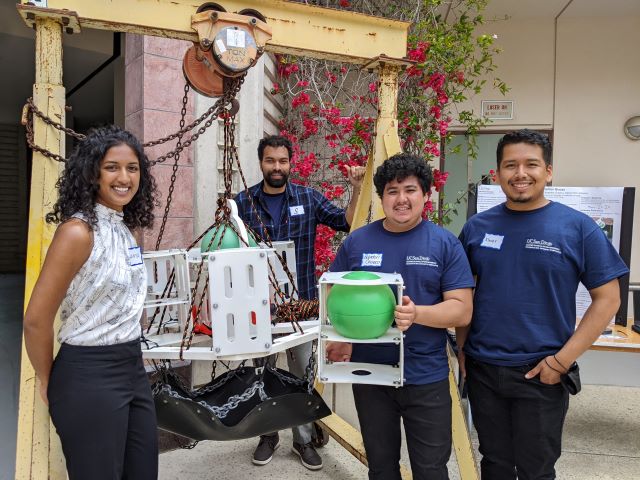
University of California San Diego (UCSD) announced on Twitter recently that a group of undergraduate mechanical engineering students have developed tools to improve human ability to source environmental data from hard-to-access places, like deep in the ocean, or high in the sky.
According to UCSD News, Brandon Orozco, Ananya Thridandam, Rachel Luu, S Grimes, and Klever Pirir-Jimenez formed two of more than 30 teams this year that spent 10 weeks creating solutions to real-world problems put forth by members of the community and local companies.
For their Jacobs School of Engineering capstone senior design projects, two teams took on the challenges of designing a drone system to capture air samples around the world, and a deep-sea data buoy system to collect underwater environmental data, respectively.
The mechanical engineering (MechE) students developed the components necessary to turn an off-the-shelf drone into a portable air sample collector, allowing well-mixed air samples to be retrieved from locations without an existing collection tower. This solution is both less expensive and allows more precise control of the sampling location when compared to the logistics of building a permanent tower, and could be used in tandem with existing collection towers to source samples from more locations.
Another team of students was tasked by their sponsor, the Naval Information Warfare Center Pacific, with creating a deep-sea data collection system to gather information on the presence of dichlorodiphenyltrichloroethane—DDT, a powerful insecticide—and other undersea pollutants.
The students designed a large, pentagonal device made up of six smaller buoys, each with its own sensors and GPS tracker safely inside. The goal is to send the whole device down into the deep sea, and have each buoy be able to surface at a set period of time—for example, one buoy might surface every other month, meaning only one deployment per year is necessary. The GPS tracker in each pod makes retrieving the pods and data when they surface much simpler.
The project is part of the capstone senior design course that all mechanical and aerospace engineering students take. The goal is to provide students an opportunity to put all they’ve learned into practice, working within real-world constraints like budgets and timelines. For more information, click here to visit the website.
Undergraduate mechanical engineering students are making it easier to source environmental data from hard to access places, like deep in the ocean, or high in the sky. These senior design projects were sponsored by @Scripps_Ocean and @NAVWARHQ. Learn more: https://t.co/B1xC6Tx7jd pic.twitter.com/hD0ayKWvjp
— UCSD Engineering (@UCSDJacobs) June 30, 2022
The U.S. Army Corps of Engineers has been tasked with…
Brown and Caldwell, a leading environmental engineering and construction firm,…
Humboldt State University, one of four campuses within the California…